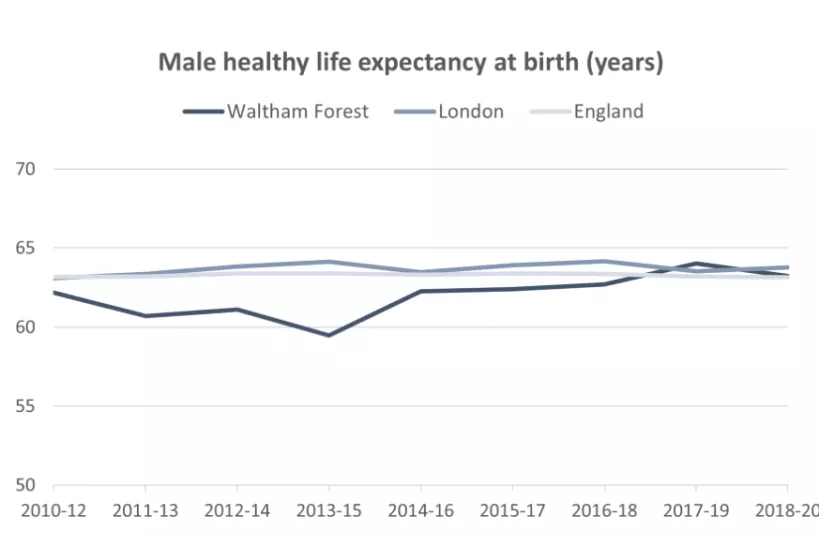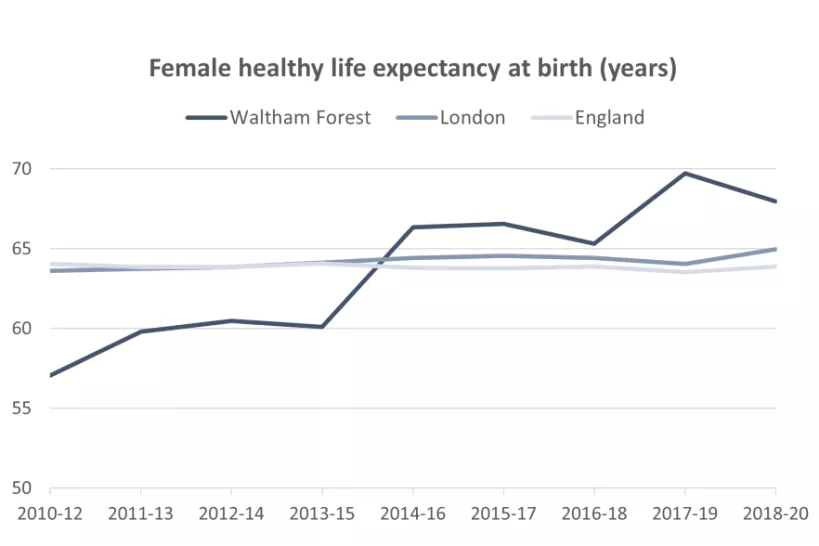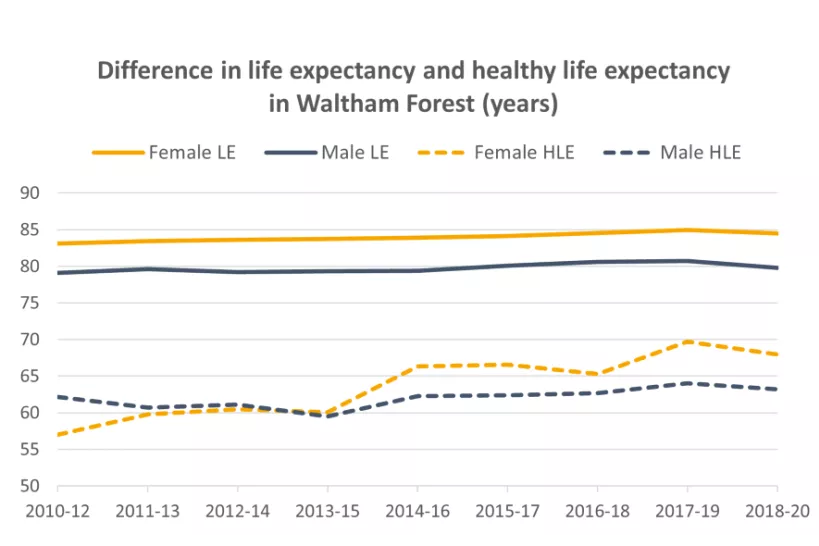Last updated: 20 May 2024
Next review: 20 May 2025
This content is part of the Waltham Forest JSNA. To see other JSNA content, visit the JSNA landing page
Healthy life expectancy is a measure of the average number of years a new-born baby would expect to live in good health (rather than with a disability or in poor health), if mortality rates, and the prevalence of self-reported good health at each age, remain constant in the future.
Male healthy life expectancy at birth
During 2018 to 2020, the healthy life expectancy for males in Waltham Forest (63.2 years) was similar to the London (63.8 years) and England average (63.1 years). This was a significant improvement from 2013 to 2015, when the healthy life expectancy for males in Waltham Forest was 59.5 years.

Source: OHID Public Health Outcomes Framework. Data from ONS. Date accessed: 16 Feb 2023
Female healthy life expectancy at birth
In 2018 to 2020, the healthy life expectancy for females in Waltham Forest was 68 years (4.8 years longer than for men) and higher than both the London (65.0 years) and the England averages (63.9 years). Female healthy life expectancy in Waltham Forest has seen a significant overall improvement in the past decade (7.7 years since 2009 to 2011).

Source: OHID Public Health Outcomes Framework. Data from ONS. Date accessed: 16 Feb 2023
Difference in life expectancy and healthy life expectancy in Waltham Forest
The difference between life expectancy and healthy life expectancy is around 16 years for both males and females in Waltham Forest (with both living on average around 80% of their life in good health). Men in Waltham Forest can expect to live an average of 63.2 years in good health, and this hasn’t changed significantly over the past decade, whereas women have seen a significant improvement in the healthy life expectancy in the past decade rising from 60.3 years in 2009 to 2011, to 68 years in 2018 to 2020.
Healthy life expectancy adds a ‘quality of life’ dimension to measures of overall life expectancy. If life expectancy increases at a faster rate than healthy life expectancy, while the average lifespan will be extended, a greater proportion of life will be spent in poor health. This has implications both for the health and care needs of the population, as well as people’s quality of life.
In the last decade, increases in healthy life expectancy have exceeded the increases in life expectancy for both males and females in Waltham Forest, resulting in the population, on average, living longer and spending more years in good health. Gains in life expectancy and healthy life expectancy have been more pronounced for females, causing the gap between these two measures to narrow from 22.5 years in 2009 to 2011 to 16.5 years in 2018 to 2020.
The COVID-19 pandemic is likely to have had a significant impact on both life expectancy and healthy life expectancy, and it may take a number of years for these impacts to be fully realised.

Source: OHID Public Health Outcomes Framework. Data from ONS. Date accessed: 16 Feb 2023